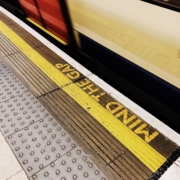See the Big Picture
I enjoy puzzles. I enjoy all kinds of puzzles – word puzzles, number puzzles, brain games, etc. – but in this instance, I am specifically referring to jigsaw puzzles, the ones that are pictures cut into hundreds of little pieces that need to be assembled. And I have a preferred method of assembly: first, turn all of the pieces face-up, setting aside those that have a straight edge (the outside frame); then assemble the outside frame; finally, begin to assemble the rest of the pieces, looking first for pieces that more obviously fit in the same section together. In the process of putting the puzzle together, however, one of the most important components is not the puzzle itself, but rather, the picture on the box.
It is the picture on the box that provides the perspective and the vision of what is being assembled. It provides a visual landscape that helps in determining the general context or place where an individual piece belongs. It’s a map that lets you see where you want to go. I once used the picture on the puzzle box to illustrate a lesson in a class I was teaching, by giving a puzzle to each of several small groups of people. Some of the groups had the puzzle box so they could see their picture, but some of the groups did not (and some had all the correct pieces, but some had the wrong pieces or were missing pieces; that served to make a different point). Part of the purpose of the lesson was to illustrate the importance of “the big picture,” or the master plan, for managing a process, a task, or life itself.
Bilbo Baggins in The Hobbit, by J. R. R. Tolkien, demonstrated the same concept when he and the company of dwarves were traveling through the Mirkwood Forest. As they traveled, the troupe lost sight of the path they needed to follow, became lost, and began to be disoriented. Eventually, Bilbo was sent to climb a tree in order to get above the canopy, and when he did, two things happened: his head cleared, and he could see where they were in relation to where they needed to go (in the movie, he could see the edge of the forest; in the book, he could only see more trees).
Heifetz & Laurie address that idea in a Harvard Business Review article, “The Work of Leadership” (2011). In the article, they discuss the importance and challenge of adapting behaviors and changes in order to thrive in a new or different environment and specifically identify six principles for leading adaptive work. The first principle is labeled “Get on the Balcony,” which is explained as follows: “Get on the balcony. Don’t get swept up in the field of play. Instead, move back and forth between the ‘action’ and the ‘balcony.’ You’ll spot emerging patterns, such as power struggles or work avoidance. This high-level perspective helps you mobilize people to do adaptive work.” They go on to say that “business leaders have to be able to view patterns as if they were on a balcony. It does them no good to be swept up in the field of action.” The emphasis is on the importance of a leader being able to move between the balcony and the field of action, and the necessity of the balcony for providing perspective.
Collins & Hansen also address the idea in Great by Choice (2011), in a chapter that discusses identifying and responding to dangers and changes in the environment. Using the terms “zoom out” and “zoom in,” they point out that effective leaders, “when they sense danger, immediately zoom out to consider how quickly a threat is approaching and whether it calls for a change in plans. Then they zoom in, refocusing their energies into executing objectives.” The authors then describe the discipline required to “zoom out for fast yet rigorous decision making and zoom in for fast yet superb execution.” The discussion emphasizes the need for effective leaders to be able to step back and zoom out to the big picture in order to recognize and understand the changes and issues in the environment, which then makes them better able to zoom back in and focus on plans, objectives, and details.
The implication is simply this: a good leader needs to be able to see the big picture. Like puzzle pieces, each piece of the context, the environment, the organization, or the situation fits into a larger context, and you can best see how it fits when viewing the whole picture. In order to see the whole picture, you, as a leader, must be able to get on the balcony, zoom out, and get above the forest to be able to see clearly. Being able to do this will keep you from getting lost among the trees, and will provide the perspective necessary to implement changes and adjustments. Learn to see the big picture.
Collins, J., & Hansen, M. T. (2011). Great by Choice: Uncertainty, Chaos, and Luck – Why Some Thrive Despite Them All. New York, NY: Harper Collins Publishers.
Heifetz, R. A., and Laurie, D. L. (2011). “The Work of Leadership,” in HBR’s 10 Must Reads on Leadership. Harvard Business Review Press: Boston, MA.




Leave a Reply
Want to join the discussion?Feel free to contribute!